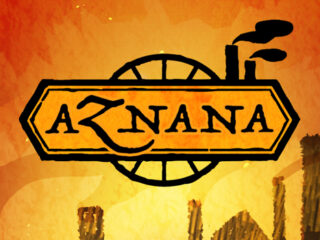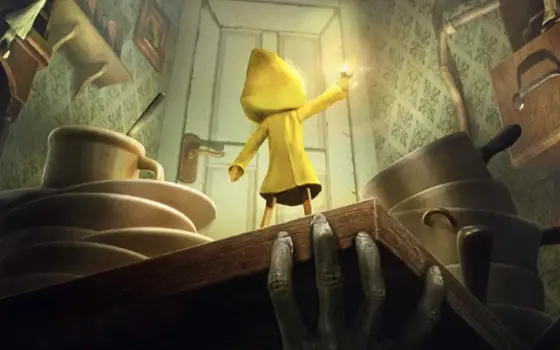 Wadonk’s Captain Cowboy was a test of initial bias for me. I had already decided I liked the game before playing it. Call it unprofessional, but I say it’s not fair that the play store has all those lush, colorful screenshots to sway me with so early on. Is this a testament to how the title’s classically inspired CRT-monitor look taints one’s perception of how good the game is? I think it’s more that Captain Cowboy does what the hypothetical Best Android Game would do: set yourself apart, pander, look cool, play easily, and put a smile on people’s faces.
Wadonk’s Captain Cowboy was a test of initial bias for me. I had already decided I liked the game before playing it. Call it unprofessional, but I say it’s not fair that the play store has all those lush, colorful screenshots to sway me with so early on. Is this a testament to how the title’s classically inspired CRT-monitor look taints one’s perception of how good the game is? I think it’s more that Captain Cowboy does what the hypothetical Best Android Game would do: set yourself apart, pander, look cool, play easily, and put a smile on people’s faces.
The most flavorful dish this game brings to the potluck is its presentation. Sprites are compact and cute, there’s the aforementioned streaking vintage fuzz saturating the screen, music is atmospheric and perfectly matches the feel of the game, and all sound is muffled like you’re smothering your Pioneer HI-FIs with a pillow. It’s all finely immersive, placating all those who are incorrectly nostalgic about the days of eye-bleeding Cro-Magnon screen technology. This is, of course, by no means a bad thing.
Immediately upon starting, you are literally jettisoned into a world lacking story and tutorials, just as the gods of retro would have deemed holy. The game functions identically to the Commodore 64 classic Boulder Dash, in which you tunnel through soil (or moon dust in this case?) collecting gems and dashing out the way of boulders, which will always fall downwards if there is no soil below them. If one rock is stacked upon another and no soil is blocking it to either side, it will fall off the rock it’s perched upon. Falling boulders will, obviously, spell disaster for any miner tragically caught in their path. You have a lot of tricks to get around this, however, such as the physics conundrum of rocks not falling while your character is under them, allowing you to strategically dig in a way that keeps you from becoming a headlamp-adorned pancake. Be careful though! The very gems that serve as the impetus behind your journey can crush you as well, leading to a love/hate relationship with the buggers. Once you get to the fabled “exit” teleporter, you beat the game and start over, hopefully not before taking a space bus to the adorable and flavor-text rich hub town to buy some exploding porcupines.
There’s a lot of exploration to be had, which–uncommon to games so open-ended–makes way for a good deal of focused game design. The simple mechanics of Captain Cowboy are conveyed to the player almost entirely by trial and error, which not only enforces the retro aesthetic further, but forces the player to engage themselves with the unknown, which in a way puts us into the shoes of the protagonist. Involving the player as much as possible in their actions was clearly a strong focus of the game: while underwater or floating uncontrollably through space, the music will muffle itself further, attempting to provide a disconnect between places where you have full control over movement, and places where you don’t. What’s more, the game is punishing to those who attempt to rush through. You must consider every step you take, because it’s far too easy to accidentally crush yourself with a boulder, permanently block an important path, or get vaporized by energy turrets. This may excuse the somewhat slow movement (though that becomes less appreciated when back-tracking). Patience and spatial awareness are important, for once you find out that gems block turrets, or that porcupines must be crushed by a rock to activate, you won’t be solving challenges the same way again.
The flaws in the game are minute, but still present. Paradoxically, while the game exceeds in creating a living, breathing homage to a true classic, the proximity to which it emulates said classic ends up being its biggest issue. To put it simply: gems, when collected, increase your score, and the modern player just doesn’t care about high scores. This creates a conflict with how the rest of the game is designed because most of the little optional obstacles you are presented with have no incentive for you to complete them, since they always involve getting more gems. Also, as a mere consequence of the open-ended formula, no distinct difficulty curve is present, since the creator can’t anticipate where the wind of adventure will lead you. Still, as I gaze upon the glowing inspirational messages curiously dotted among the game-world, and can’t help but feel a heart-warming sensation as I play. This is one of those feel-good games, like Animal Crossing or Katamari Damacy, where having little gameplay snags ruin the experience for you only re-enforces how callused and un-child-like your heart has grown. Go buy it.
Hardcore?
Yup!
A boulder-dash homage of pure soul and delightful aesthetic.




























